Worth the Weight
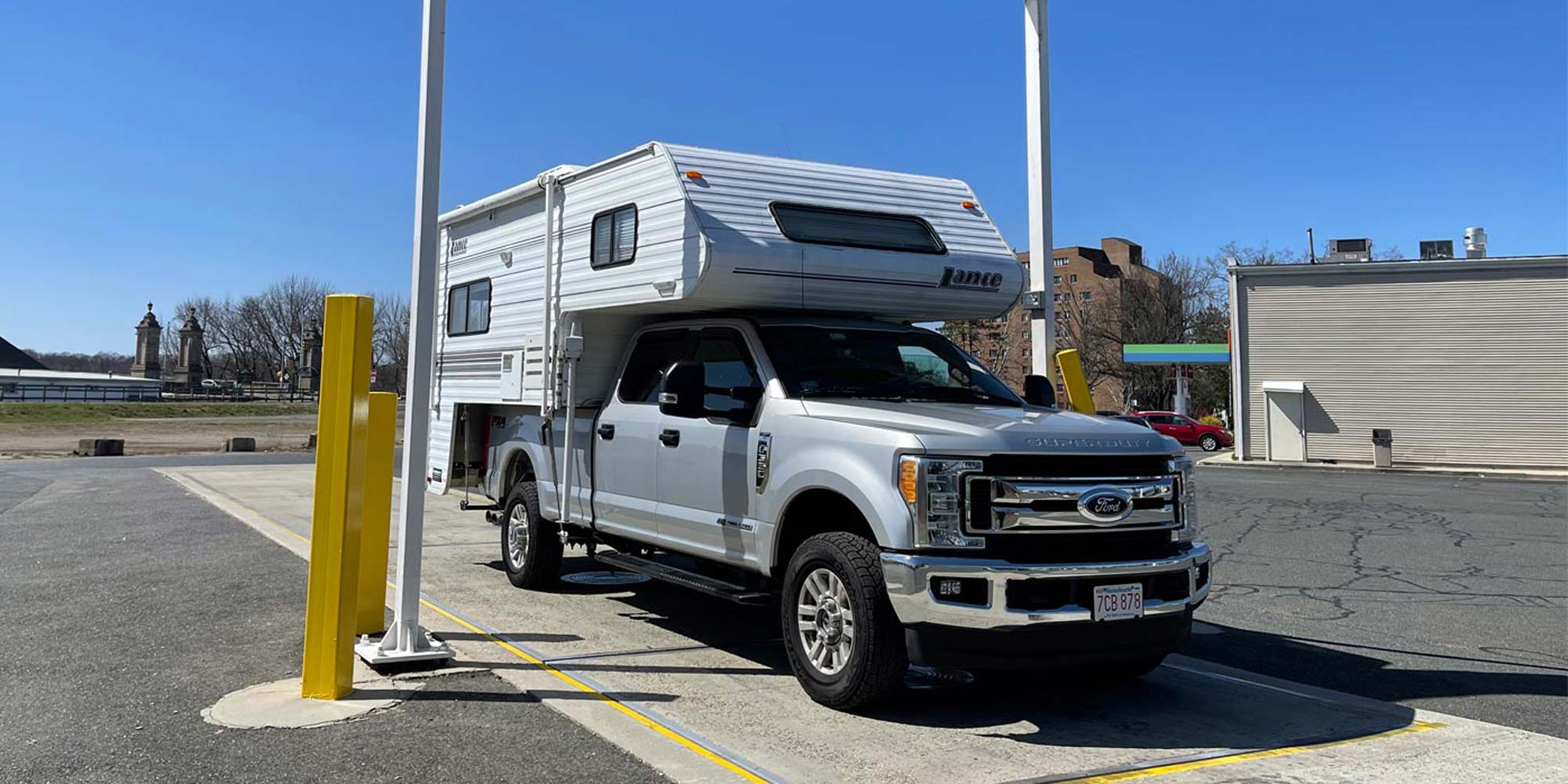
Elsewhere in this issue, we’ve touched on the importance of your vehicle’s tow rating and how you can find it, as well as considerations like gross vehicle weight rating (GVWR), gross combined weight rating (GCWR), gross axle weight rating (GAWR), cargo carrying capacity (CCC) and payload. All are important for safe towing, but in most cases, you’ve only got the manufacturer’s figures to draw from. In most instances, that won’t be a problem as long as all of the important figures are within range — but getting the actual weight of your specific tow vehicle/trailer or truck/camper is always a good idea.
For one thing, weighing your rig when it is full of water, propane and all necessary supplies will give you the actual weight of your rig, not the stated base weight. It will also give you the actual hitch or pin weight, which is important when making sure the tow vehicle’s payload and GAWR have not been exceeded. It can even sort out problems you may be having with your individual set-up. Perhaps your trailer suffers from sway at a certain speed, for example, which could indicate there is insufficient hitch weight. Actual weight will help you find out for sure, after which you can shift cargo forward or travel with the freshwater tank (usually located ahead of the rear axles) full, placing more weight on the hitch.
Knowing the actual weight will also tell you how much margin is left before the trailer/tow vehicle is overloaded, which may come in handy on a long trip where you may want to travel with more gear or supplies. Getting your actual weight is just a smart thing to do, and it’s neither difficult nor expensive to obtain.
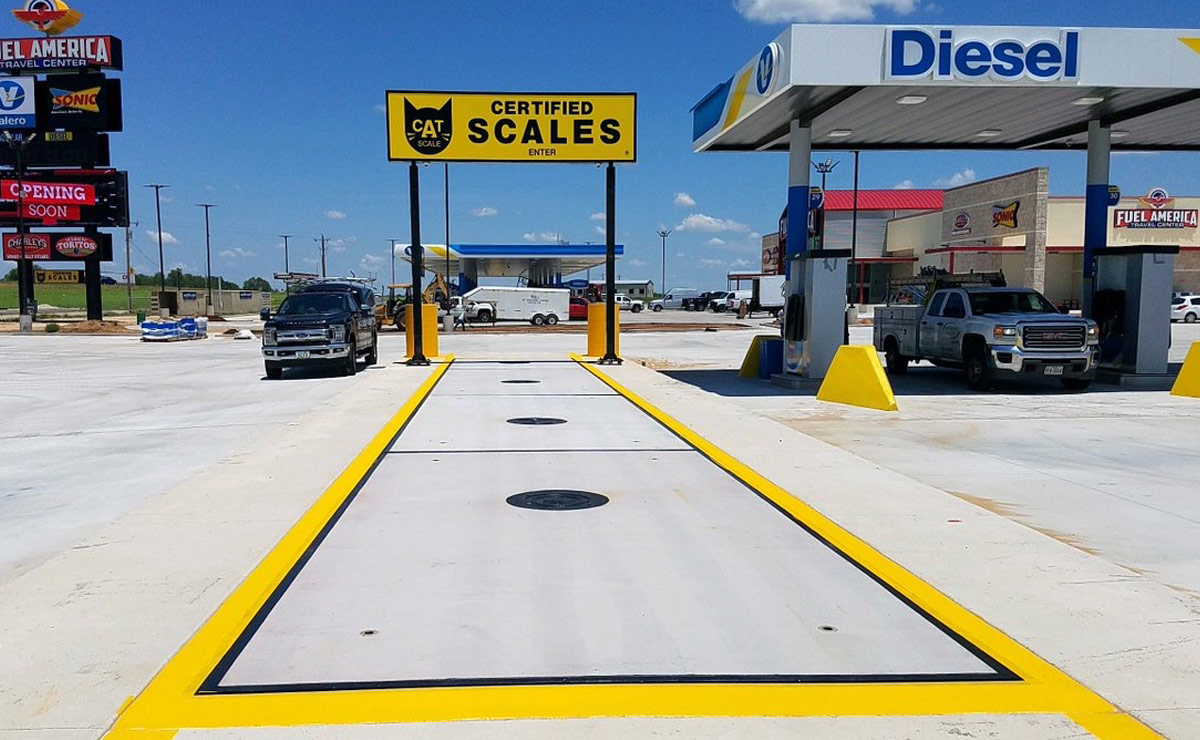
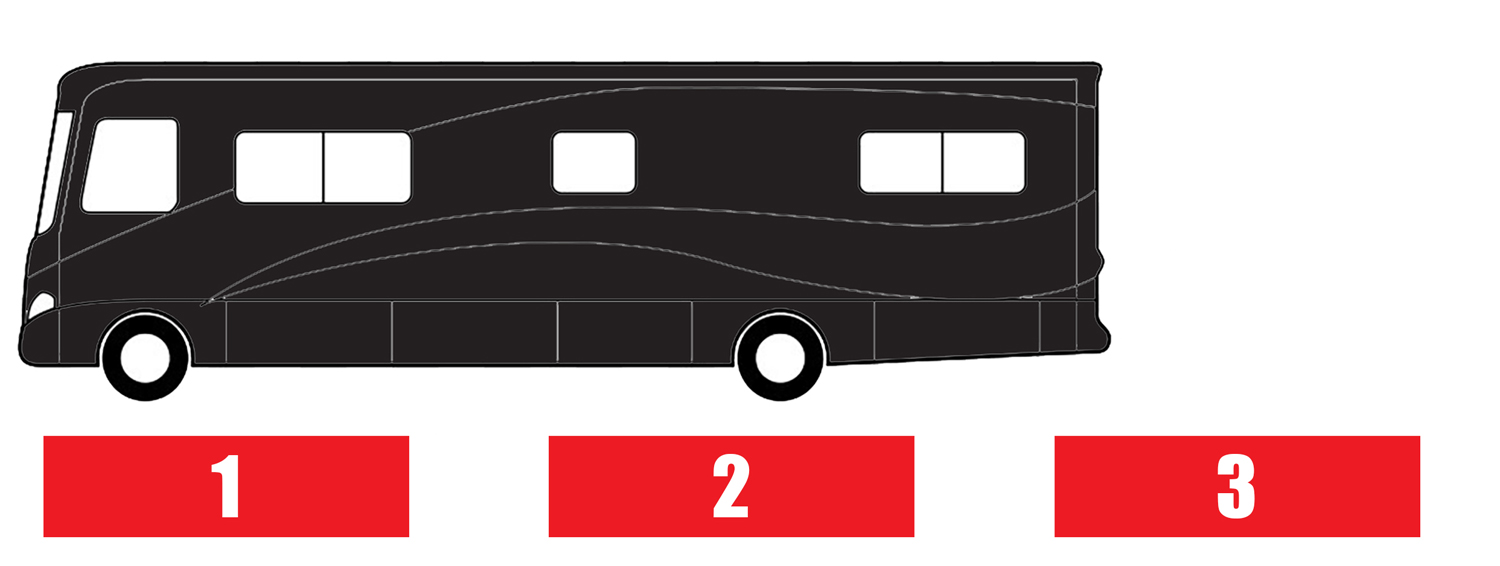
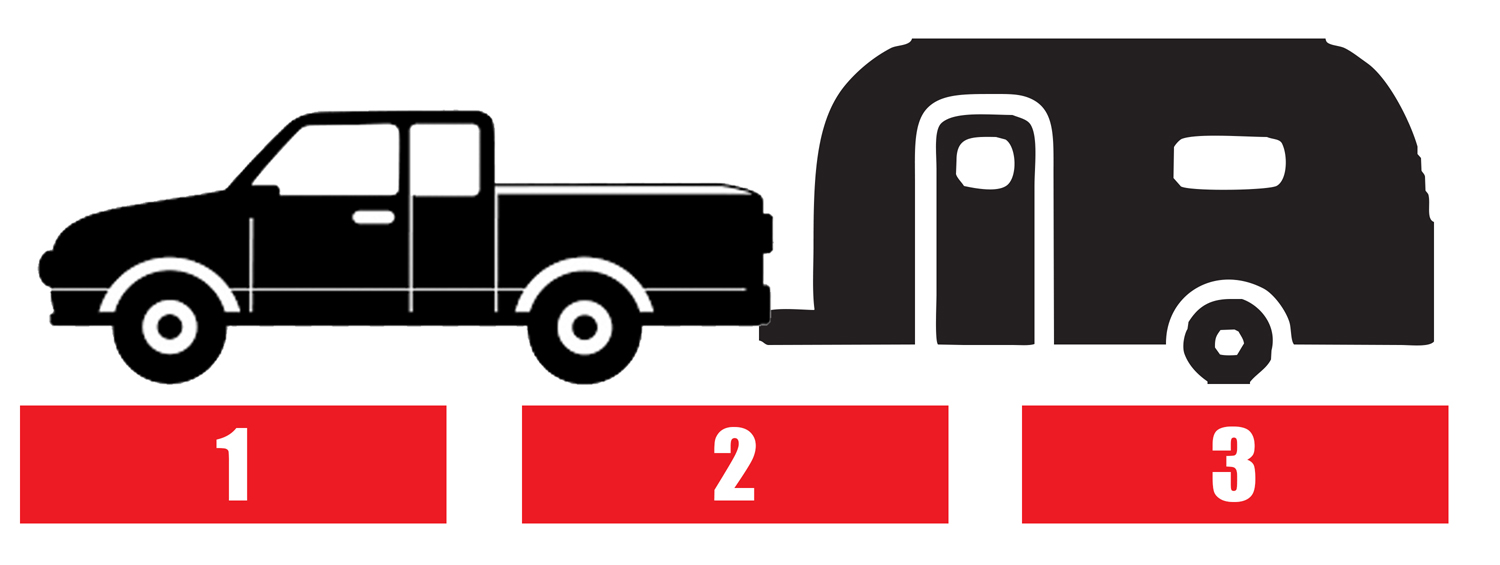
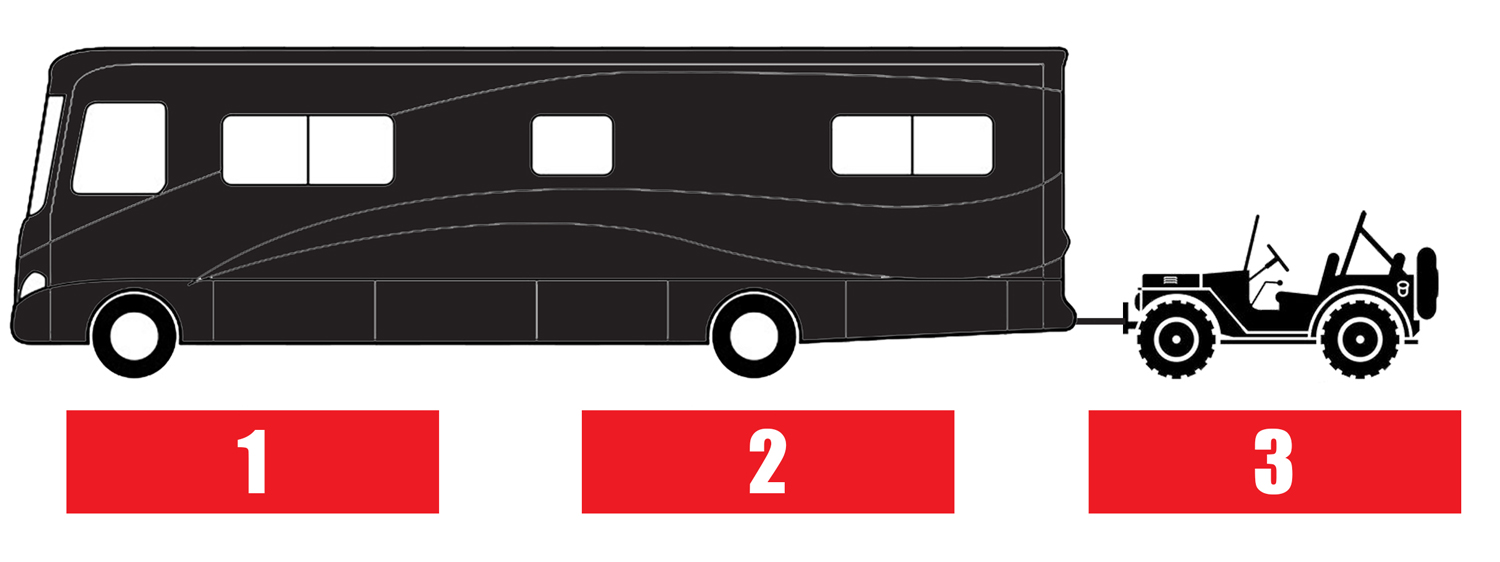
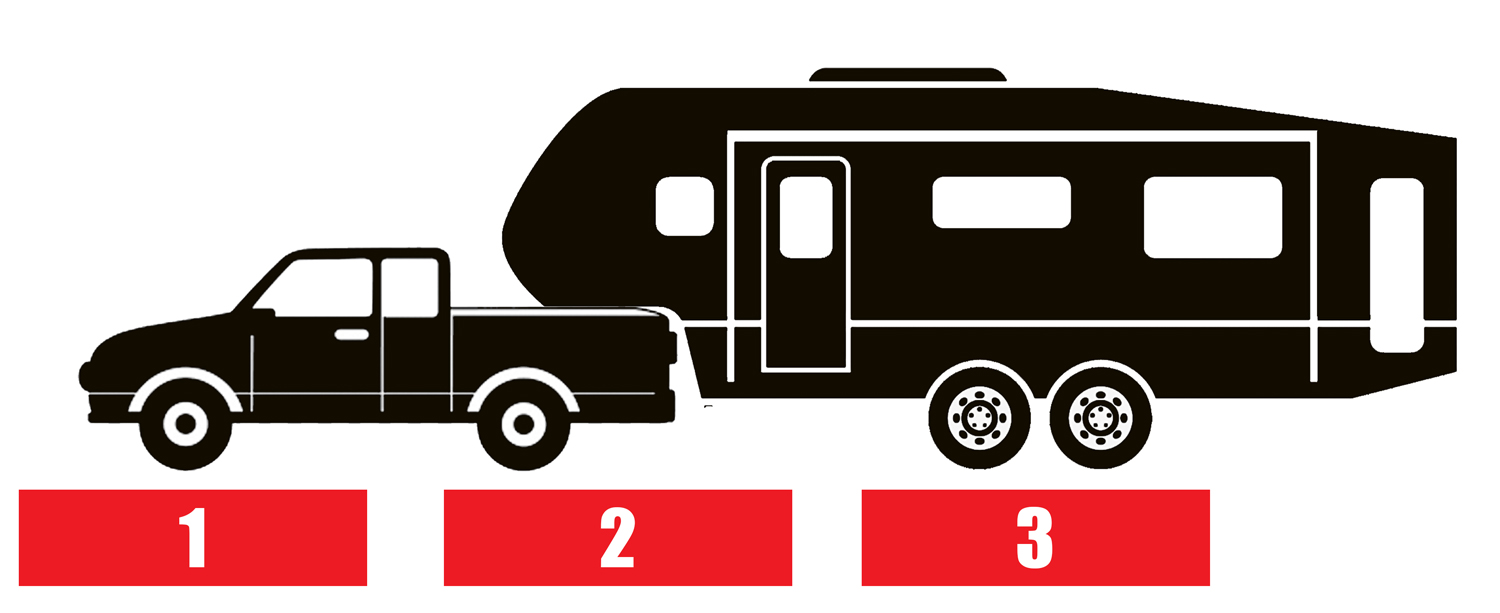
Tires and Loading
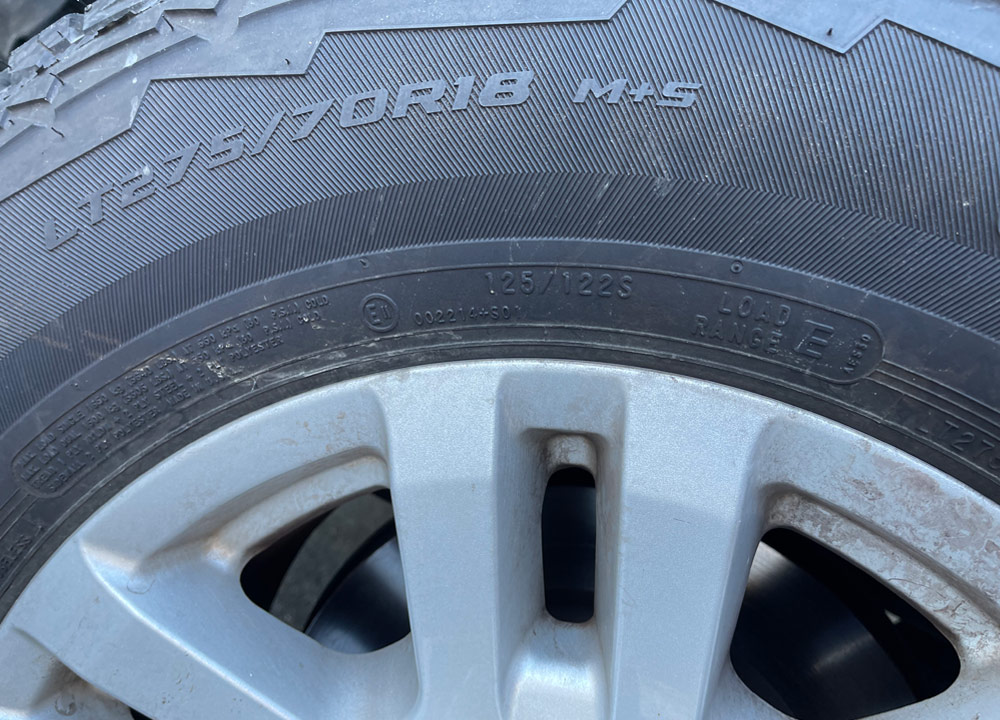
Consider that the tire size and load rating is part of the tow vehicle’s GAWR, which means if the tires are not inflated to the pressure indicated by the tire placard inside the vehicle driver’s side door jamb, the load carrying capacity for the rear axle is diminished. The load range E tire pictured here, which is on a Ford F-350 single rear wheel truck, is rated for 3,640 pounds at 80 psi, which jibes with the truck’s 7,000-pound rear GAWR (two tires at 3,640 = 7,280 pounds).
Generally speaking, it’s always a good idea to keep the tires at the stated maximum inflation pressure for safety’s sake. Manufacturers like Cooper, Goodyear, Michelin and Toyo publish load/inflation tables that can help you determine how much load a tire can carry at reduced pressure, but the concern is that if you only inflate to load and the tire loses pressure (due to a slow leak, for example) it can become overloaded and could fail.
Unlike passenger car tires, where the maximum inflation pressure on the sidewall should never be exceeded, the pressure figure on the sidewall of a light truck (LT) or trailer (ST) tire is the minimum pressure necessary to carry the maximum load. In other words, if a tire reads “Max load single: 3000 lbs. at 65 psi cold”, 65 psi is the minimum cold inflation pressure necessary to carry the maximum load figure.
If the weight of the tow vehicle or trailer exceeds the tire’s ratings, moving up to a higher load range tire (example: from a load range D to load range E) is not the answer. Like tires, rims also have load and pressure ratings — and a tire with a higher load rating can exceed it, possibly resulting in catastrophic rim failure. Always replace tow vehicle or trailer tires with the same size and load rating, keep them properly inflated and use a tire pressure monitoring system to keep tabs on inflation pressure for all the tires (tow vehicle and trailer) while you’re driving.
Lastly, all tires have a speed rating (or default speed of 65 if not stated on a trailer tire) and that speed must not be exceeded. The tire is tested under load at speed to ensure it won’t fail, which is how it gets the rating. Exceeding the speed rating (along with inflation and load) can cause additional heating and the forces on the tire can cause it to fail. If you don’t take your tires for granted, they will almost certainly reward you with reliable, safe performance.
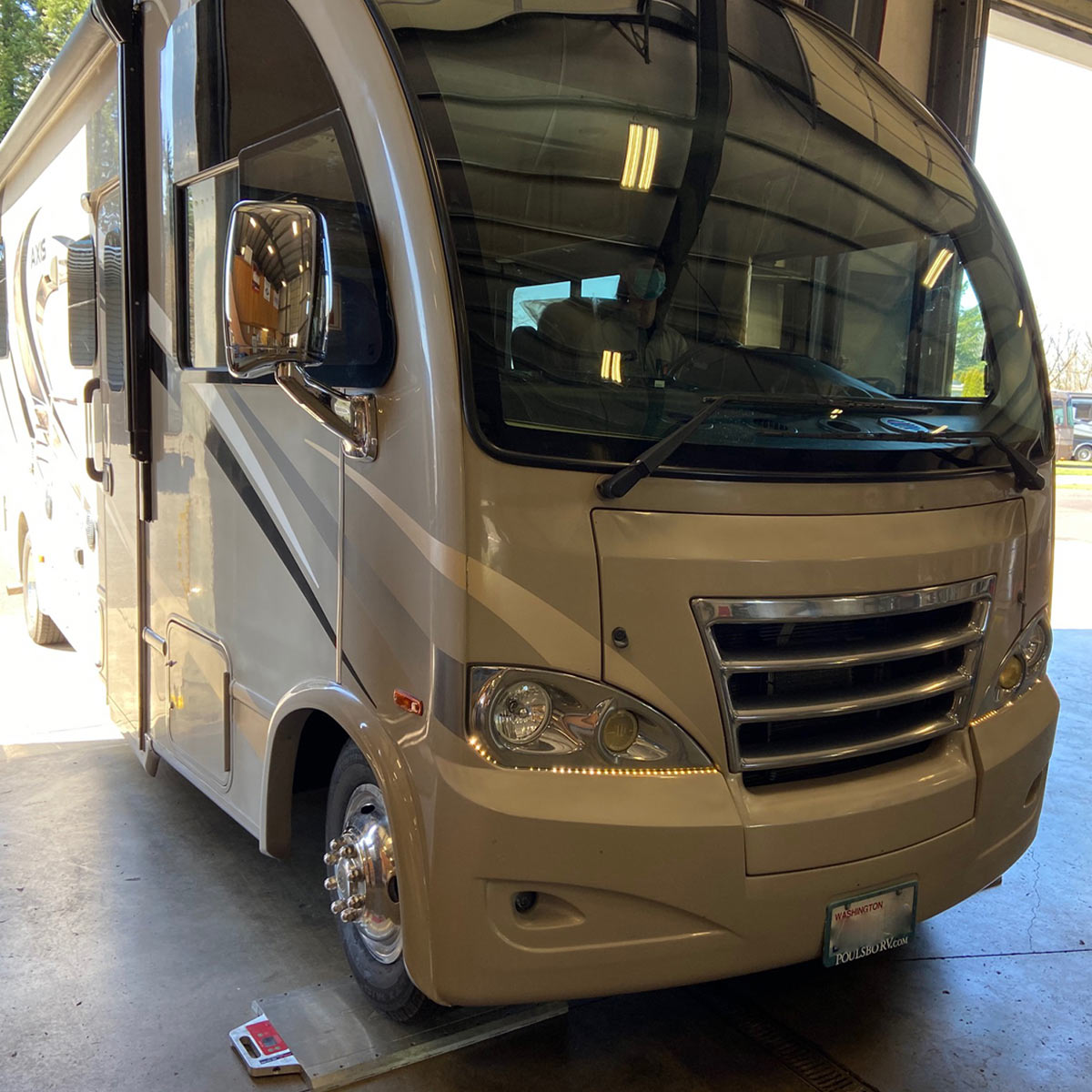
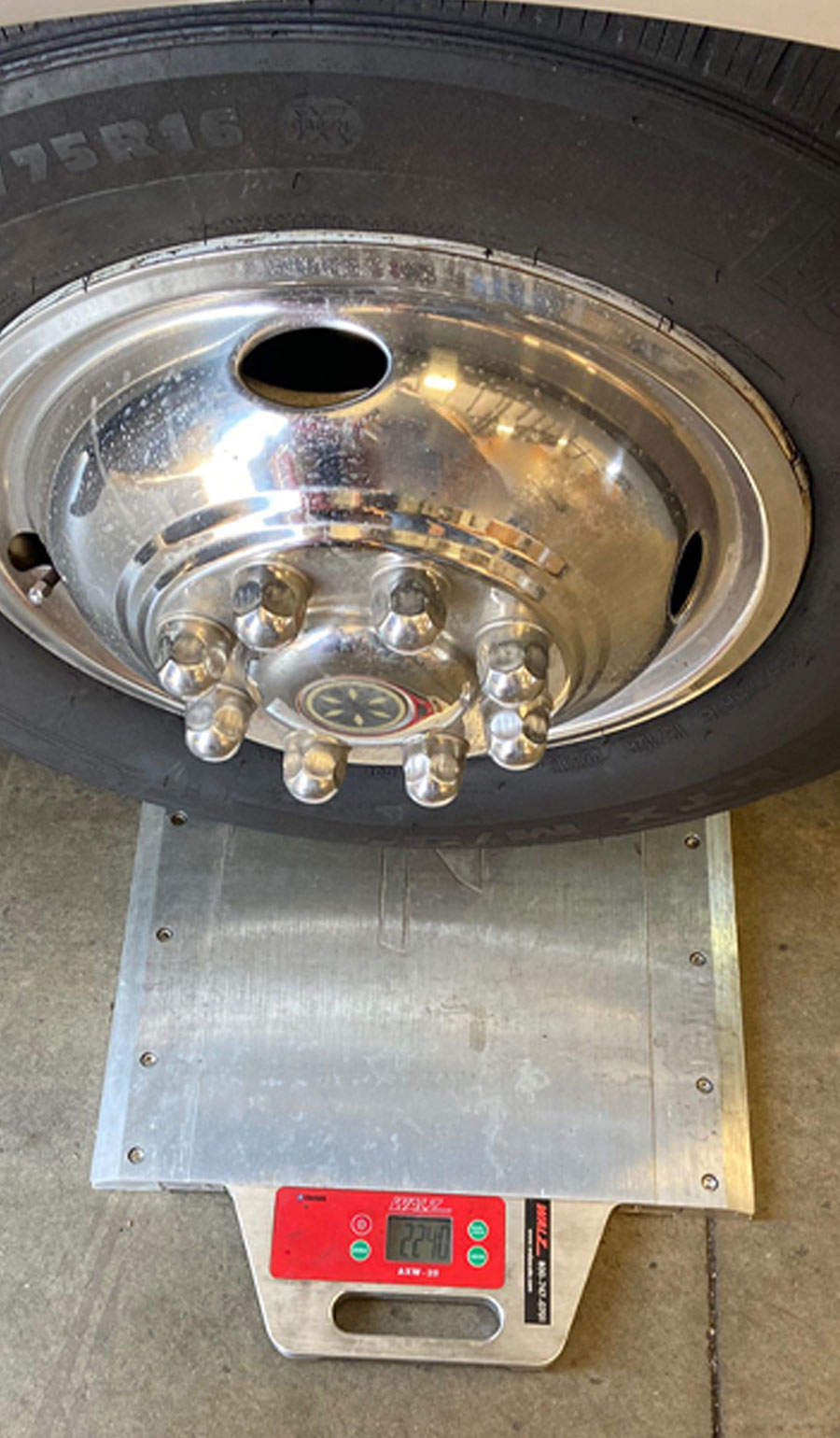
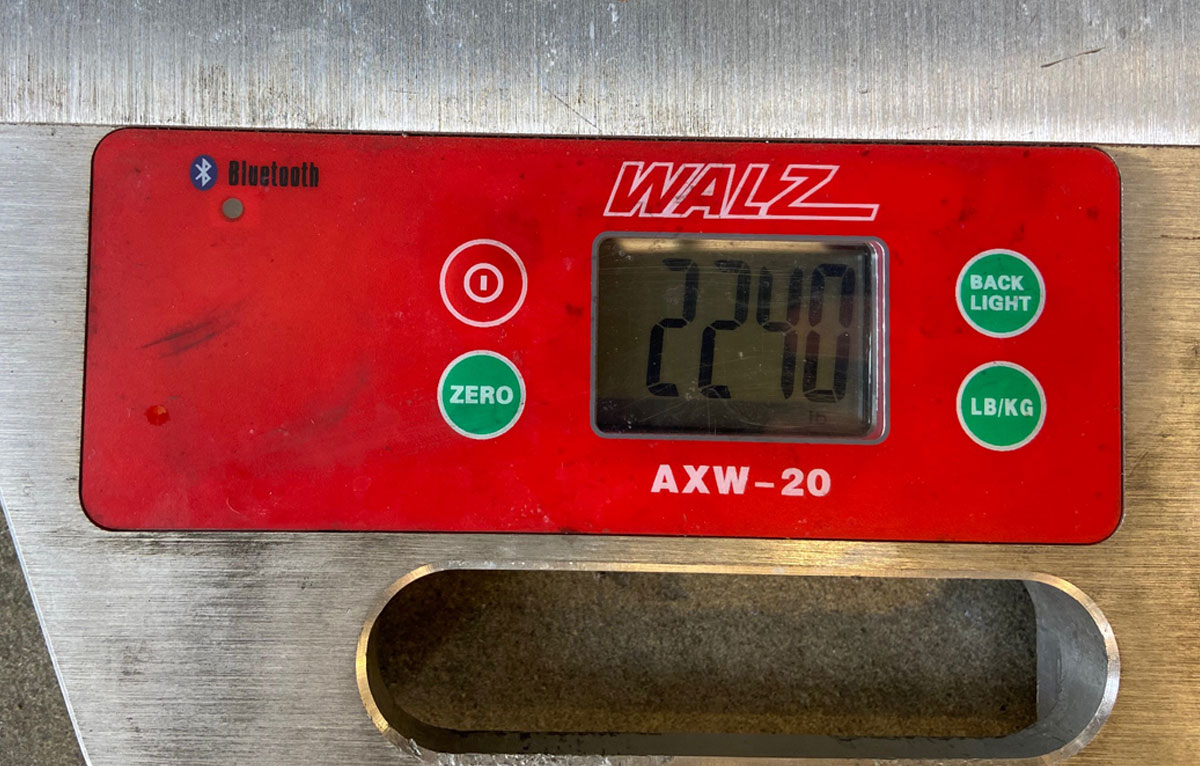
This first weigh will give you the gross combined weight and axle weights, depending on where the axles fall on the scale. Now, if you’re towing a trailer and want to know its weights, you’ll have to do a second weigh. After the first weigh, tell the operator that you’ll need a second weigh for the trailer. He/she will ask you for company and truck and/or trailer number, so have this information ready. This is to identify you and your equipment at the fuel desk or weight booth. If you are weighing a motorhome, the weigh ticket will provide axle and total weight. There is no need for a second weigh. However, if you’re towing a dinghy it’s a good idea to weigh it, as well, in order to determine the gross combined weight of your rig.
Because you now have the weight of the tow vehicle and trailer, mathematics will allow you to extrapolate the trailer pin or hitch weights by weighing the tow vehicle alone without the trailer. Drive off the scale and drop your trailer in an appropriate parking spot, then proceed back to the scale for your second weigh. Once you’re on the scale, hit the intercom and tell the operator this is your second weigh. This will give you the tow vehicle weight only. Once the operator confirms the weigh, go back and reconnect the tow vehicle and trailer and proceed to the fuel desk to get your tickets.
The first weigh will give you:
- Gross combined weight (GCW) of the truck and trailer
- Gross vehicle (GVW) and axle weights for a motorhome.
- Tow vehicle front and rear axle weights, which will show you the operating weight of the tow vehicle axles. Note: This weigh should be done with weight-distributing equipment in place (if applicable) as you would have it while driving.
- Trailer axle weight(s).
The second weigh will give you:
- The truck’s actual weight and individual axle weights without the trailer, but otherwise loaded for travel.
With this information you can determine:
- The hitch/pin weight of the trailer. Subtract the total tow vehicle weight without trailer from the tow vehicle with the trailer. The difference is the operating trailer hitch/pin weight, since the weigh was with the weight distribution system in place (travel trailers). Fifth wheel trailers will be the actual pin weight.
- The rear-axle weight of the tow vehicle to determine if it is overloaded
Remember, the trailer and tow vehicle should be loaded as though you’re going to travel. In fact, you may want to schedule a weight check en route to your next destination. All fuel tanks and cylinders should be full and water- and holding tanks empty.
As eluded to earlier, the one value you won’t get by weighing at a public scale is weight by wheel position. While it may be possible to have the vehicles half-on the scales in some truck scales to weigh each side, it is generally not possible to do this. The best possible weighing scenario is to have the RV weighed by wheel position; this is how the RVSEF weighs RVs at the events they attend. For information on events near you, visit https://www.rvsafety.com/schedule. If this doesn’t work for you, contact a local RV or heavy-truck repair center in your area to see if it can weigh your rig by individual wheel position. RV forums are another good place to network with other enthusiasts who may be able to help locate a shop with wheel scales. Also, there’s a smartphone app called RV Tow Check which helps with the process.
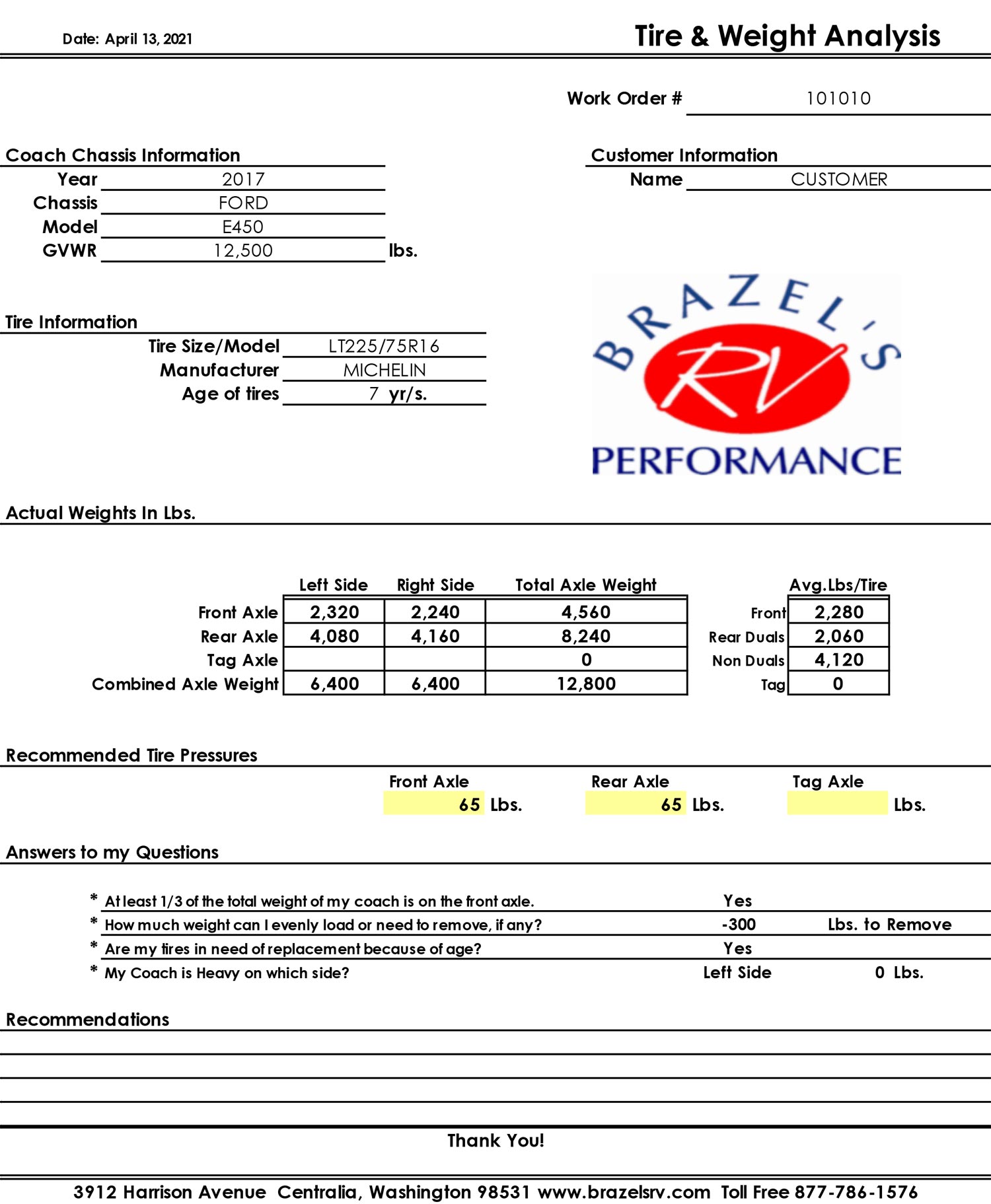
This is where weighing by wheel position is important. While an RV may be within its weight rating for a particular axle, it’s possible for one wheel position to be overloaded depending on how the RV is balanced and how it is loaded. With individual wheel weights, it may be possible to shift weight to improve handling/stability.
We all want our RV experiences to be safe, enjoyable and as economical as possible. Paying attention to tow vehicle, trailer and motorhome weight at the beginning of a trip — and making sure you don’t add weight later or pick up too much weight while on the road — will go a long way toward that goal.
Did You Know?
Weighing a Pickup Camper
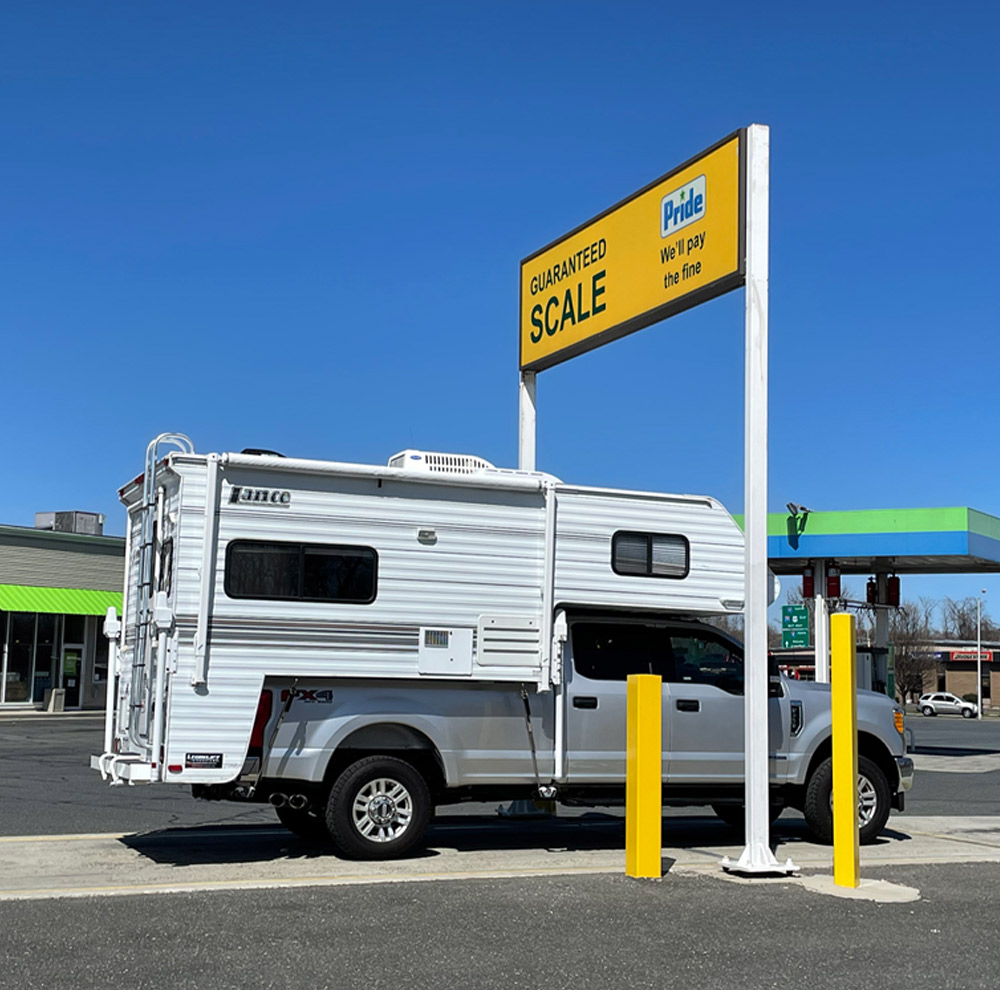
If you’re shopping for a camper, keep in mind that these also have a label that lists the camper’s base weight (no additional options) with water and propane on board. Make sure that this figure does not violate the stated maximum payload and GVWR of the truck, and remember that maximum payload includes passengers as well as all cargo you normally bring in the truck — not just how much it can carry in the bed.
Truck camper labeling does not list GVWR (because it’s not a vehicle), so determining the weight when it is loaded and ready for travel is on you.
If the camper has optional equipment like an A/C unit, generator or larger refrigerator, those must be added to the stated base weight. The manufacturer should be able to help determine additional weight based on optional equipment.
When weighing a truck/camper combination, start with the truck by itself, full of fuel and anything you would normally carry in it for a trip, including passengers.
If you already own a camper, load it on the truck, again filling the freshwater tank and loading the stuff you would ordinarily bring on a trip. Repeat the process above with the camper onboard to ensure the payload, GVWR and GAWR have not been exceeded. If you are overweight by a few hundred pounds, reconsider what you normally bring, or travel with the freshwater tank at, or nearly, empty if possible.
Campers are popular because they give you the freedom to tow a dinghy vehicle, boat or utility trailer. If you are going in that direction, it’s important to take the trailer’s weight and hitch weight into consideration, and make sure the tow rating and GCWR aren’t exceeded.
Already a Subscriber? Click here for Access to the Full Issues.

